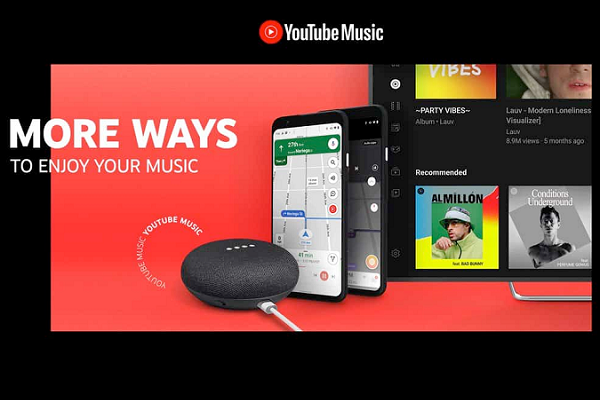Google Assistant Gets YouTube Music Playlist Control on Android As Media and Control Consolidation Continue
 Google Assistant can now access and begin playlists created by users on YouTube Music. The addition is part of Google’s plans to shut down Google Play Music in favor of YouTube Music as its media center. The Android aspect expands the same feature for Google Assistant on other devices from August as YouTube Music’s streaming service is supposed to be able to handle everything that Google Play does, including the voice controls.
Google Assistant can now access and begin playlists created by users on YouTube Music. The addition is part of Google’s plans to shut down Google Play Music in favor of YouTube Music as its media center. The Android aspect expands the same feature for Google Assistant on other devices from August as YouTube Music’s streaming service is supposed to be able to handle everything that Google Play does, including the voice controls.
Mobile Playlisting
Google Play Music is in the midst of a global shutdown in October. YouTube Music has been rapidly adding replacement features, but the Android side of things has been lacking some of the critical voice controls until now. While Google Assistant has been able to find and play official playlists made by YouTube before, personal playlists, ones built by users, have not been accessible. The feature also builds on Google Assistant’s ability to create playlists using what the listener has previously indicated they like to generate a list. However good the recommendations may be, it’s not the same as pulling up a personally curated list of songs. That changed starting with the August addition of voice controls for those playlists, but that was still limited to Google Nest smart speakers and smart displays and even then only in the United States. Plans to add other devices were vague until this week when Android users started reporting that Google Assistant could play personal playlists by request. There’s no need to say YouTube Music specifically, as it’s just the default. Users can also pull up the list of songs and albums they have liked by voice request.
Consolidating Sounds
Considering that Google announced plans to end Play Music, this kind of basic control is coming in rather close to the cutoff time. It’s been several months since Google added a transfer function for Play users to move their content to YouTube Music. The actual data will still be available until December to encourage any lingering Play users to transfer their content before it vanishes. Of course, Google has a history of moving around content as it launches or consolidates services, most notably in its repeated attempts to create a successful social network service. And the streaming model has some benefits that may be encouraging Google’s change, such as advertising including with interactive ads like those Pandora is testing out. Perhaps, more importantly, is that moving media into YouTube-branded services helps Google consolidate its services and administer them more efficiently. The same goes for integrating as much of its control into Google Assistant as possible. It gives the end-user a seamless interaction whether at home or using their smartphone while out. If someone is comfortable using Google Assistant to access their playlists on YouTube Music while traveling, it makes sense they might find it easier to build out their smart home with the same tech ecosystem using Google Nest to interact with the voice assistant and their music on YouTube.
Follow @voicebotai Follow @erichschwartz
Google Assistant Can Now Play Personal YouTube Music Playlists as Google Play Winds Down
Amazon and Google Both Launch Free, Ad-Supported Music Streaming for Smart Speaker Owners
Google Assistant Snapshot Adds Voice Commands and Proactive Suggestions








